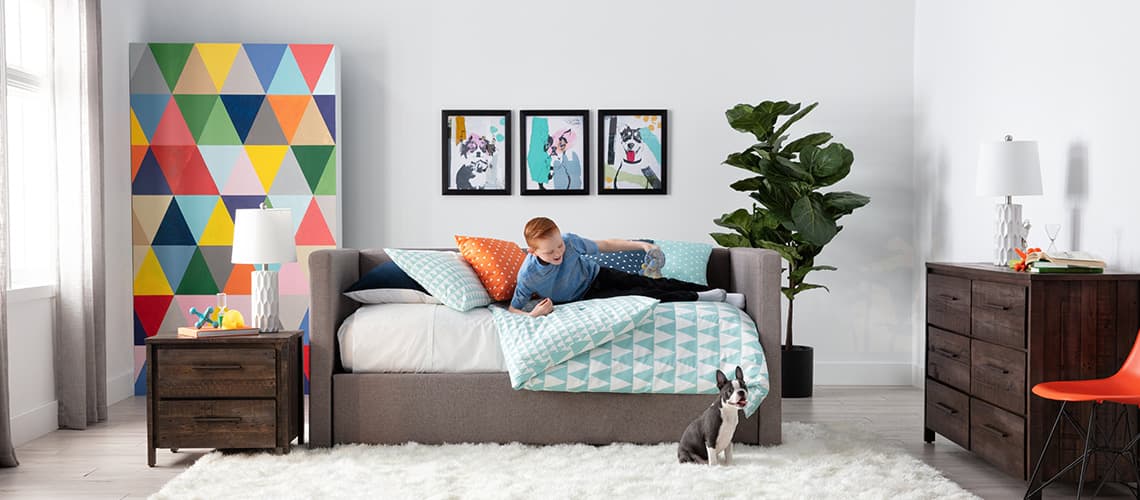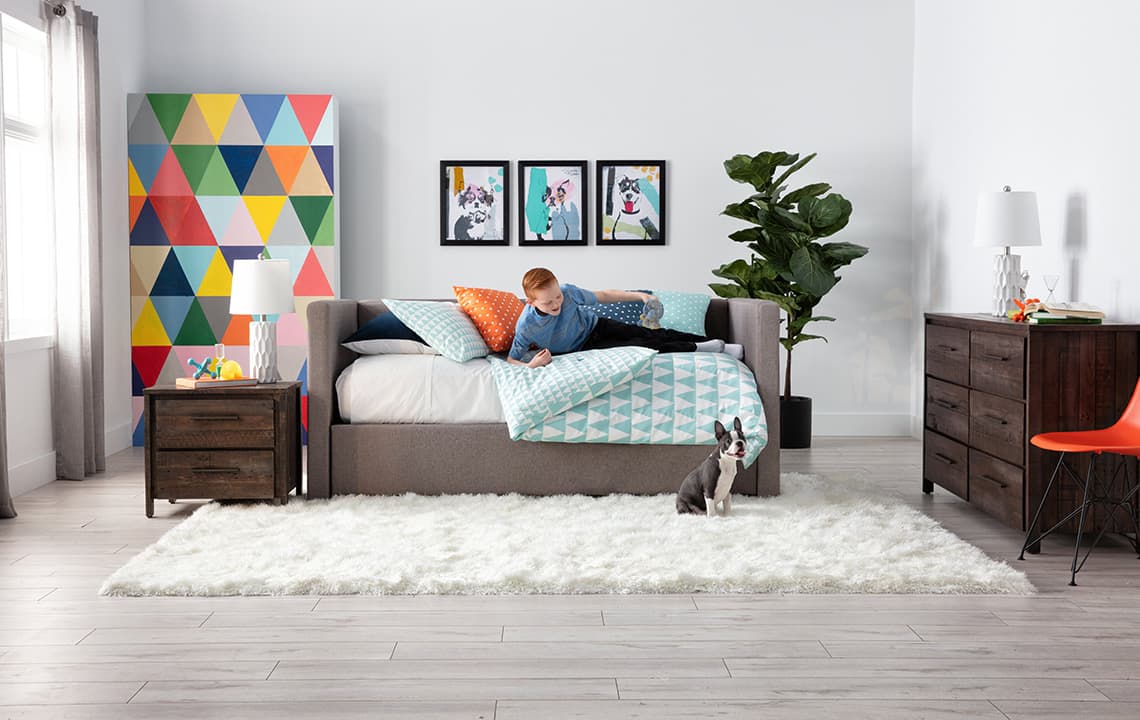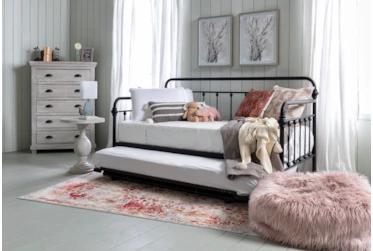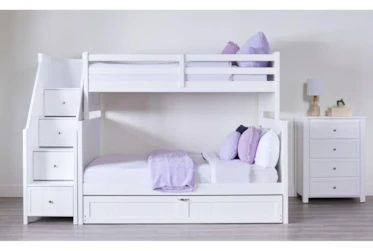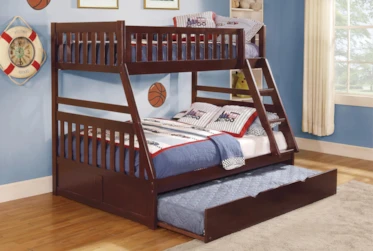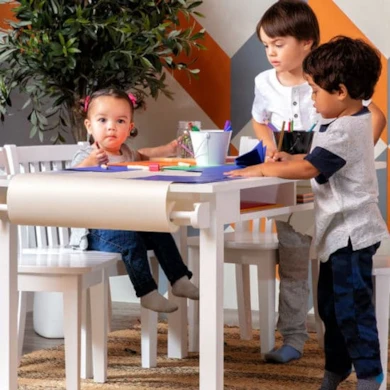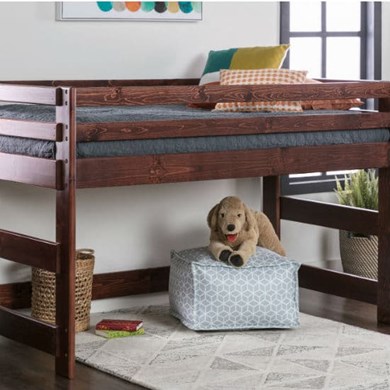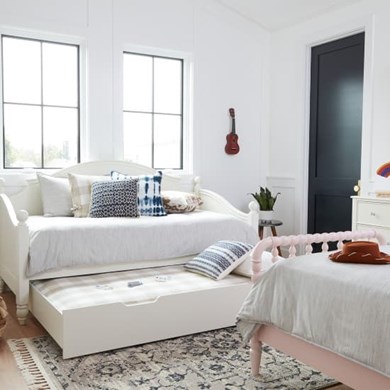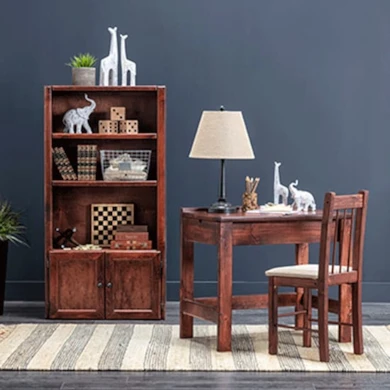Monsters Under the Bed? Not Anymore, with This Simple Trick!
In some form or another, it’s happened to us all once, and it may be happening to your kids now: The thought arrives that there may be monsters under the bed. This can be scary either way. It’s especially scary, though, when it’s your children who are experiencing the fear, because short of trying to console them with words, it may seem like there’s nothing you can do.
Until now. Did you know that monsters can’t live under a trundle bed? Yep, it’s a fact. Veritas. Think about it: Where would the monster even go? Underneath a trundle bed, there’s another bed, and underneath that bed, there’s no room to hold a dust bunny, let alone a monster! Even if your trundle bed isn’t the kind with a bed underneath but rather the kind with a storage drawer underneath, there’s no way a bona fide monster could live there, either. What, is he going to squeeze himself a spot next to folded stacks of socks and underpants (or whatever it is you keep stored in the trundle)? No way! But just as a hypothetical, let’s imagine for a second that a monster does manage to squeeze himself in a trundle drawer next to folded stacks of socks and underpants: that would make him, what, like the size of a pencil? We don’t know about you, but a pencil-sized “monster” (if he could even be called that) is not scary, and actually kind of cute. The overall point, though, is that a trundle bed, for all intents and purposes, banishes the idea of monsters. “Sweet dreams” are about to get a whole lot sweeter.
Dealing with Sleep Anxiety in Children
In all seriousness, sleep anxiety (or the anxiety one may feel about going to bed or falling asleep) is common among children. Whether your child is dealing with monsters under the bed, in the closet or in the dark in general, or is simply expressing fear about the dark and/or going to bed alone, there are a few steps you, as a parent, can take to help ease your child’s disruptive thoughts. Childrensmd.org has actually compiled a helpful list of 10 – here are our top six key takeaways from their list.
- Talk to your child while he or she is in bed. Before you give your child a goodnight kiss and turn out the lights, talk with your child – “with” being the keyword here. Listen to what is on their mind. Ask them questions that will cause them to think about the rationality of their fears. Reassure them that any worries they may be having are just worries and nothing more. Making bedtime a chance for bonding and, indirectly, teaching, can help your child to feel heard and comforted – and perhaps even look forward to bedtime.
- Limit screen time. Limit screen time before bed, during the day and in the morning – basically, limit it overall. This Harvard article spells it out plainly and simply: the blue light emitted from our phones and tablets suppresses the secretion of melatonin. (Melatonin is a hormone that promotes the body’s circadian rhythm, or your “internal clock” that relaxes you right before sleep and wakes you up in the morning.) Blue light is most sleep-disruptive when you are exposed to it at night. Furthermore, the article states that sleep disruption is linked to increased risks for depression, cardiovascular complications and diabetes. In conclusion: after the sun goes down, keep an eye on your child’s use of screens, limiting it most in the two hours before bed.
- Establish routine. They’ll seldom admit it, but children crave routine. (Routine, for a child, is, in a lot of ways, like oxygen: a child can’t “see” it, but needs it regardless.) And unlike candy and TV, this is one craving you should give into! Set up a going-to-bed schedule (if you don’t have one already). Stick to it. It may help to write or print one out in a fun, visual chart that is easy for your child to understand. (If you have a younger child between the ages of 2 and 4 and want to take it the extra mile, or need to take it a step further because your child is having a hard time following the routine, try taking actual photos of your child doing each step of the routine. Print out the photos, glue them onto the pages of a little book, and “read” the book together every night before the start of the routine. When your child actually sees himself or herself in a book doing things like brushing teeth and taking a bath, it can be easier for him or her to accept the routine as a reality.) Sticking to the same routine every night, at the same time, can help your child to subconsciously “wind down” for the night – not to mention, form healthy lifelong habits.
- Read to your child. No matter your child’s age, it’s always beneficial to read to your child every night before bed. The benefits of incorporating books into the routine are multifold. For one, it teaches them to appreciate books and helps to strengthen their brains and expand their vocabulary. It’s also soothing; shifting the focus from “it’s time to try to fall asleep” to a fun, positive story to spark their imaginations is an easy way to help ease pre-sleep jitters. Read out loud to younger children; as your child’s reading skills expand, take turns reading each page – or let your child take the reins altogether! For inspiration, check out NPR’s list of the best children’s books; specifically for the child afraid of monsters, we recommend #2 on this list, the idea being that a story exploring monsters head-on can take away the fear, instilling a fresh perspective and even a bit of humor.
- Allow some flexibility. Teaching your child a routine before bed is one thing, but forcing them to stick to a rigid schedule at all costs is another. If your child is having a hard time falling asleep, simply turning off the lights and saying that “they need to try to sleep” likely won’t yield much benefit. Instead, try allowing them a few extra minutes with the lights on for reading. Ideally, the lights should be dimmed, so a reading light or book clip to accompany the book may be a good idea.
- Seek the advice of your child’s pediatrician. Sometimes, the fear of the dark or monsters under the bed is nothing more than a temporary effect of having seen a scary movie, or a big imagination that just needs a little reality-check every so often. Other times, these fears run deeper and can be harder to eliminate. When everything it seems you can do on your own just isn’t working, it may be beneficial to approach the problem from a more professional standpoint – or at least get the opinion of your child’s pediatrician. This doesn’t always have to be prescriptive: Often, a doctor can reframe the problem through a perspective you may not have seen before, and offer some simple solutions or new routines customized for your child’s specific experiences.
… And a Bonus Tip (of Our Own)
At Living Spaces, we believe in the power of design, that the right colors, style and lighting can shape how a person (such as a child) feels in a room. With this in mind, we can’t help but chime in with some tips of our own – on how to create a comfortable space your child will love and feel “safe” in, and perhaps even forget that there were ever any monsters to begin with. First, we recommend investing in a children’s bedroom set; the more kid-friendly and stylish it is, the more likely it is your child will be excited to go to bed! Then, incorporate lighting designed for children’s bedrooms – choose a lamp in your child’s favorite color and place on your child’s nightstand. (We recommend one of these fun “animal” lamps – when your child wants to turn on the lights to “banish” the darkness, they’ll be able to do so with a little “friend” right by their side!) Finally, cozy up the space; warm up the floors with a children’s room-sized area rug, and incorporate bright, comfy pillows into your child’s bedding. In other words, create a space in which your child can feel secure, where they can let their guard down – a space that your child can feel belongs to them and not monsters!
Bye-Bye, Monsters!
— More Great Articles —
Banish Monsters, Once & for All!
Read the Latest
Editorial Disclaimer: Articles featuring tips and advice are intended for educational purposes and only as general recommendations. Always practice personal discretion when using and caring for furniture, decor and related items.
